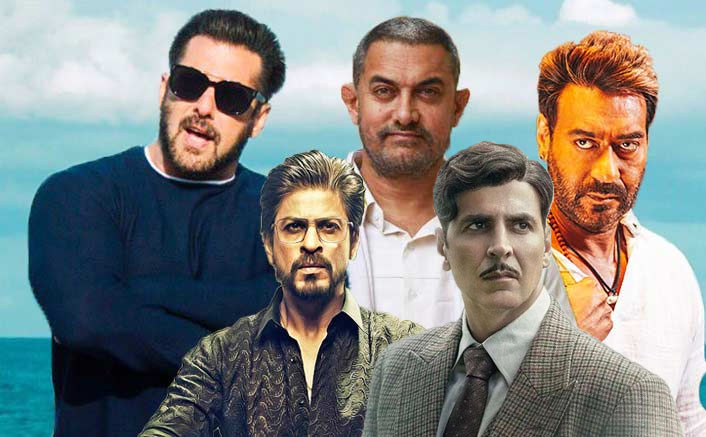Times have rarely been tougher for Bollywood, India’s Hindi language film industry. Revenue from theaters plunged by 80% to $378 million in 2020, according to consultancy EY.
Theaters started reopening in October after an eight-month shutdown last year, but now some are closing again owing to Omicron.
Amid the disruption, though, the industry that saw annual revenue of $2 billion prior to the pandemic has found a sliver of hope in one of the world’s hottest trends: non-fungible tokens or NFTs.
Since November, industry players have raised around $4 million by selling NFTs, digital assets that provide an immutable digital signature to real world objects like video clips and music, says Raj Kapoor, founder of India Blockchain Alliance.
On Jan. 12, Indian NFT platform Social Swag said its latest auction of collectibles—autographed posters, video clips, and digital versions of characters portrayed in the movie 83, about India’s 1983 Cricket World Cup win—sold for INR 1 million or about $13,500 within an hour of its launch.
Diginoor.io, a Singapore-based NFT marketplace, launched a collection of 60 NFTs featuring southern Indian film star Rajinikanth on his birthday, Dec. 12. The collection includes behind-the-scenes footage, deleted scenes, and songs from Rajinikanth’s blockbuster movies Sivaji: The Boss, Chandramukhi, and Kabali. The sale of the collection is ongoing, and its tokens vary in price, from $12 to $1,212.
In November, Bollywood superstar Amitabh Bachchan launched an NFT collection that included Bachchan reciting Madhushala, a book of poetry written by his father; vintage posters from the 1975 hit film Sholay; and digital art incorporating characters he portrayed in the movies Don and Deewar. The collection received a bid of $1 million.
In October, Bollywood costume designer Manish Malhotra sold five NFTs of digital sketches of some of his most famous creations for $4,000 a piece on the Indian marketplace WazirX.
“NFTs reflect a new mindset about digital collectibles that is catching on with the millennial generation,” says Ashish Pherwani, partner for media and entertainment at EY India. “Media and entertainment is about escapism, and by creating digital avatars we are further building people’s interest in them,” Pherwani notes.
Bollywood NFTs are selling for relatively small sums compared with the giant NFT transactions that first captured the world’s attention, like the $69 million sale of Beeple’s NFT at Christie’s last year. The sales are smaller in size because India’s NFT marketplace is still so new, says Kapoor.
“The [Bollywood] tokens are for smaller sums in order to get more people to buy,” he says. “The emphasis is on quantity in India.”
The flood of Bollywood NFTs arrives just as the Indian government is weighing a new ban on some cryptocurrencies, which are used to pay for NFTs. But the film industry, eager to patch its revenue losses with quick cash from NFT sales, expects the new cryptocurrency regulation to spare the NFT market since it holds so much potential for generating revenue in Bollywood and beyond. Global trading in NFTs reached $22 billion in 2021, compared with $100 million in 2020, according to DappRadar, a firm that tracks sales.
“Even though NFTs are new to Bollywood, celebrities are seeing this as another platform where they can use their existing content and generate revenue,” says Kapoor.
Prior to the pandemic, Bollywood movie stars and singers would regularly host live promotional events for their films, glitzy award ceremonies, and stand-alone shows that were a source of income and connected them with their audiences.
Such in-person events are mostly off-limits owing to COVID, but NFTs make up for some of the lost revenue and give actors a new way to reach fans, says Arun Pandey, cofounder of Beyondlife.club, a celebrity-driven NFT platform that hosted Bachchan’s auction.
NFTs can also serve as a way for independent producers to raise money without the backing of a big production house.
“If the film is released or ready to be released, the filmmakers can use the film posters, shooting stills, or any existing material, or even trailers as NFTs and generate revenue,” says Vishakha Singh, cofounder of WazirX NFT Marketplace. The idea is to break the film down into various assets that can be sold as a form of crowdfunding, Singh says.
The independent producers of the Malayalam-language film Rocky launched NFTs of the film’s posters in December to help finance the film.
So far, the creators of Bollywood NFTs are marketing the assets to fans of celebrities, but traders are often buying the tokens to resell on secondary markets, breeding speculation, says Ravi Kiran, CEO of Indian mobile game firm GoLive and member of the Blockchain and Crypto Assets Council (BACC).
Many of the buyers are young adults who are trying to get rich quick and think NFTs are a cool asset to own, he says.
“Even in the physical art market, sales are disclosed [to the government], and taxes are declared,” Kiran says. NFT sales fall into a gray area. “We need regulation of NFTs to protect gullible youth from being cheated out of their savings and earnings,” says Kiran.
India’s parliament is scheduled to debate draft legislation for regulating the cryptocurrency sector in a session that starts in February. The bill is expected to restrict some crypto trading to mitigate risks and protect investors.
Even if India bans all cryptocurrency domestically, investors could shift to international crypto platforms outside India to trade their NFTs, says Kapoor.
“India breathes Bollywood. The wealth of content we have is a veritable treasure trove, and NFTs are waiting to be minted,” says Kapoor. “We have no dearth of fans, not just in India, but from all parts of the globe.”
Read full story on Fortune Magazine



